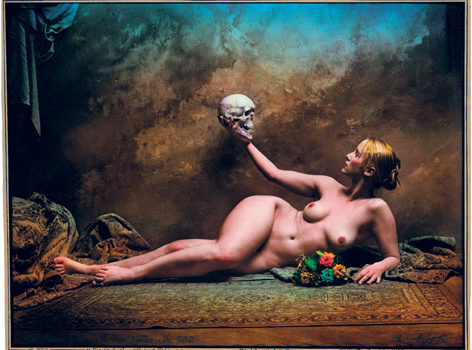In an age of rapid development of the Internet and digital tools, it may seem counterintuitive to be publishing a paper dictionary of photography. It’s true that in a search engine all you need to do is type a word and in a split-second all sort of information, concise or detailed, appears on the screen. Then why bother publishing such a book today, and what does it have to offer that Wikipedia doesn’t?
Unlike the sprawling information on the Internet — information that accumulates daily and which may be amended or reformulated in a few clicks — a paper dictionary has limited content, designed to last. Let’s be clear that this dictionary will not replace the many resources offered on the Internet. What sets it apart from them, however, is the way that the material gathered has been the object of a scrupulous selection process.
The dictionary was edited by a group of experts aiming to assist readers in their research. The content does not claim to be exhaustive. The project was risky. How does one cover the vast field of photography, including its cultural, technical, and art history, while showing restraint with the number of entries?
The assembled glossary of terms allows the readers to broaden their horizons and find concise information that may be then supplemented by other encyclopedic resources.
Photography officially dates back to 1839, and its history is far from finished. There are certainly more images produced today than there were in the previous 180 years. This dictionary necessarily marks a turning point in photography’s evolving history. Being interested in the past may allow us to better understand the present. Taking a look at the history of photography through names and themes carefully selected based on their historical importance may help us make sense of information flooding the Internet.
Photography is an object, a practice, and a profession. It populates family albums, archives, museum displays, books, magazines, daily newspapers, as well as city walls and our multiple screens. The world of photography is vast and reaches into all corners of the world. This dictionary is intended as a general introduction to the history of the medium, defined in its global historical context. It addresses the most important developments in photography, from the invention of the process in 1839 to current innovations in digital imaging. It includes information on key figures in the history of photography (it should be noted that women account for 15% of the thousands of photographers listed!); describes different trends and genres in photography; and presents a technical glossary encompassing the main processes used since the inception of the medium. The main strength of this book lies in the fact that it brings together concise articles covering not only the history of photography since its birth in the 19th century, but also an international context as broad as possible. To achieve that, the editors assembled a large panel of specialists, 80 international scholars and about 150 consultants, in order to compile a list of entries. This book is the fruit of their collaboration.
I hope that this dictionary will whet the appetite of readers interested in photography and spur them to pursue their reading. Who knows, they might find a certain pleasure in getting lost in the pages surrounding the entry they were looking for …
BOOK
The Dictionary of Photography
by Nathalie Herschdorfer
French Edition : Editions de La Martinière
English Edition : The Thames & Hudson Dictionary of Photography
Edited by Nathalie Herschdorfer
Thames & Hudson : Londres / New York, 2015
30,7 x 20,2
448 pages
300 illustrations
















